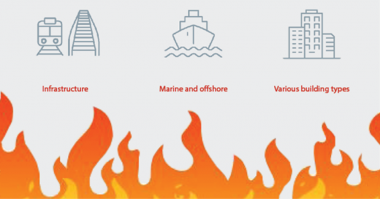As a leading manufacturer of high-efficiency components and controls for air-conditioning, heating, refrigeration, industrial, and water systems, Danfoss is committed to creating a sustainable energy future, and engineers solutions that help customers reduce their energy footprint with a strong return on investment. Its proven technologies are used around the world to help reduce energy use and carbon emissions in intensive and critical processes, such as cooling of buildings, preserving food supply, optimizing industrial manufacturing, and delivering clean, potable water.
Recognizing the opportunity for its own operations, Danfoss today has announced new energy and climate impact targets for its facilities and factories ahead of the COP21 climate summit in Paris. By 2030, the company plans to use 50 percent less energy to run its business, and reduce by 50 percent the amount of CO2 emissions resulting from the energy it consumes.
Most of the world’s energy is consumed by industry and buildings. But, according to the International Energy Agency, energy efficiency can deliver 38 percent of the reduction in greenhouse gas emissions required to slow the rate of climate warming.
“Worldwide, we deliver some of the most innovative and efficient technologies for saving energy – helping cities and companies to reach their targets,” said Niels B. Christiansen, president and CEO, Danfoss. “Now, we are intensifying our own efforts in the form of a new, ambitious climate strategy, which builds on what we have already done and achieved. We see this as a natural part of leading the way within the climate sector.”
Danfoss has already taken significant measures to help reduce the impact of its buildings and operations, and, thus, is making progress in achieving these new targets. Between 2007 and 2014, the company’s net sales increased by 55 percent, whereas its energy consumption, compared to sales, dropped by 29 percent. Typically, the energy-saving projects being deployed reduce energy consumption required for building operations by 25-30 percent. The savings are primarily obtained through the optimization and control of the buildings’ heating, air-conditioning, and ventilation systems using Danfoss’ own products.
To build upon this success, Danfoss is now intensifying its efforts to energy-optimize the company’s buildings all over the world. In addition, production line processes will be systematically examined for further energy reductions.
Danfoss is also set to continue introducing renewable energy sources to its portfolio. In 2013, for example, Danfoss installed a solar cell park next to its headquarters in Nordborg, Denmark. It produces electricity equal to the annual consumption of 400 single-family houses and has a total capacity of 2 MW. A 1-MW solar-cell system was also installed at Danfoss’ new campus in Chennai, India last year, which has received the international LEED Platinum rating, certifying it as an environmentally-friendly and sustainable building complex. A range of Danfoss products is installed to save energy on the campus.
The company operates 63 factories in 19 countries and has sales in more than 100 countries worldwide; in the United States and Canada, Danfoss has 19 facilities.
Facts about the new climate targets:
- The objective is to reduce energy intensity by 50 percent, from 24 MWh per $150,000 USD sold in 2007 to 12 MWh by 2030.
- At the same time, the amount of energy used by the company must produce half the amount of CO2. In 2007, Danfoss emitted 705 lbs. of CO2 per 1 MWh of energy. By 2030, this is expected to be a maximum of 352 lbs.
- The aim is for energy intensity at Danfoss to drop by 3 percent annually from 2017, and the emissions of CO2 per 1MWh energy by 5 percent.




